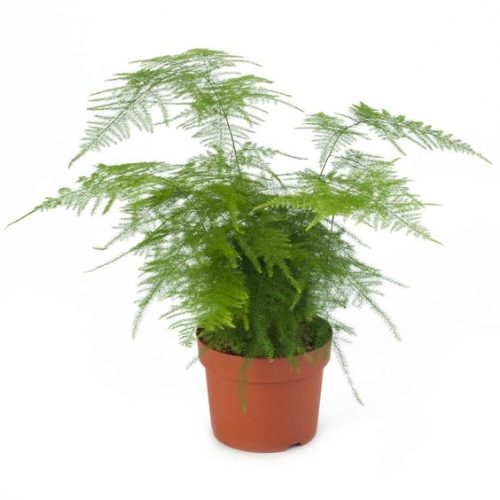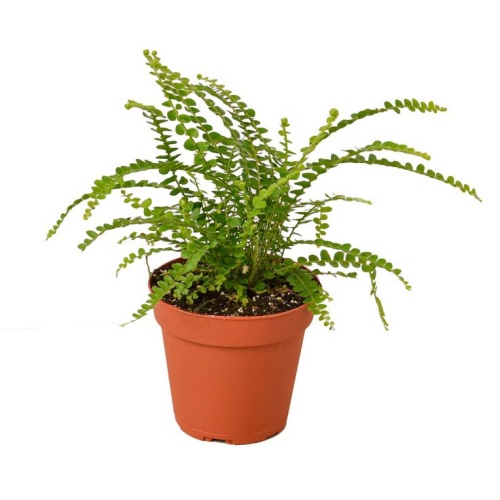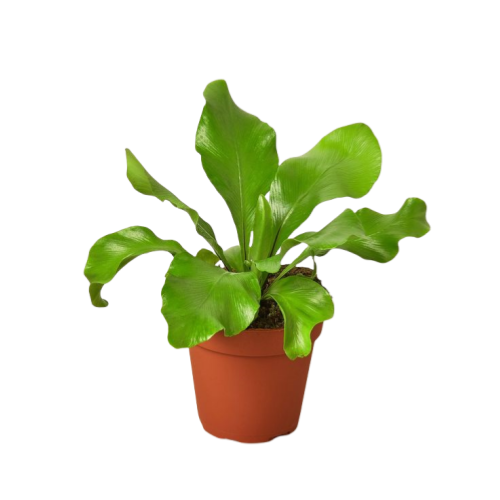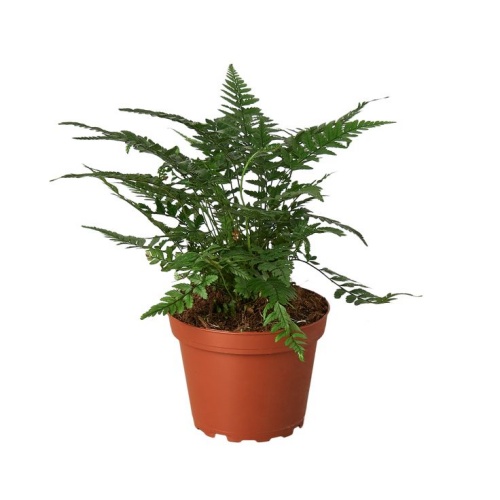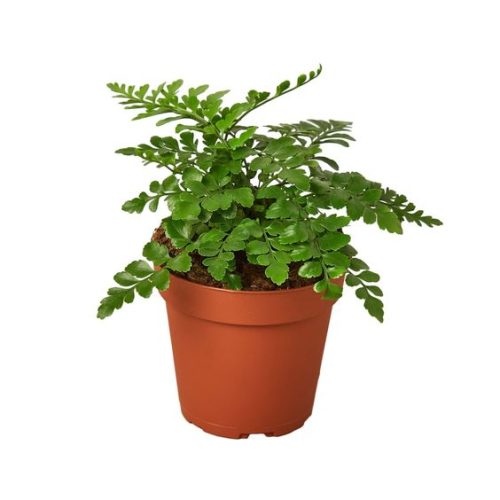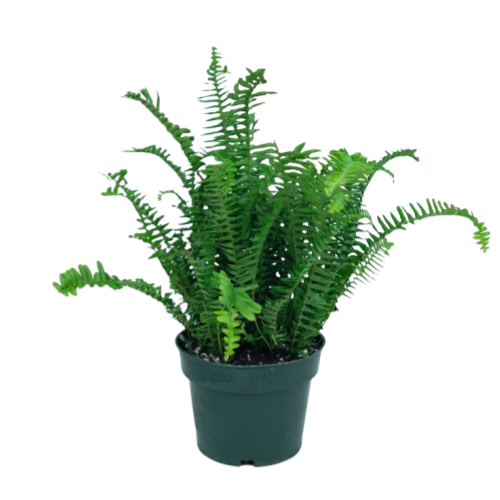Staghorn Fern
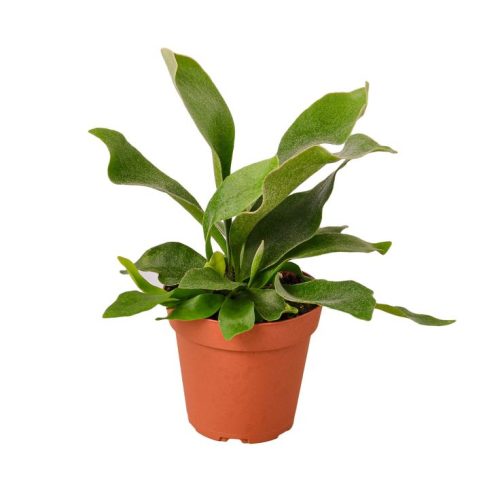
- Botanical Name:
- Family Name:
- Ị ga:
- Okpomoku:
- Others:
Nlebazi anya
Nkọwa nke ngwaahịa
Staghorn Ferns: Nature’s Antlered Interior Designers
The Staghorn Fern – Origins and Morphological Characteristics
Mbido Stagbe
Staghorn Fern, scientifically known as Platycerium bifurcatum, is native to the eastern regions of Australia, where it thrives in damp and sheltered areas of forests. This fern species is named for its distinctive antler-like fronds, which fork dramatically into multiple branches, echoing the majestic appearance of a stag’s antlers.
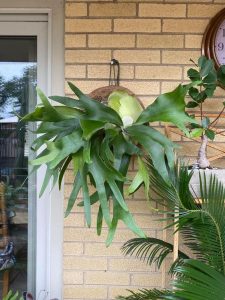
Staghorn Fern
Morphology nke stathorn fern
Na Staghorn Fern are large, leathery, and uniquely shaped, setting them apart in the fern family. They typically grow in clusters, with new fronds emerging from the center, gradually increasing the plant’s size. The fern’s morphology is not only visually striking but also an adaptation to its environment, allowing it to flourish in conditions where moisture is plentiful but light is filtered through the forest canopy.
Na-eto eto na ndò na iru mmiri
Omume na nlekọta nke ndị Stathorn Fern
Staghorn Ferns (Platyerrium spp.) Bụ Epiphytes mpaghara na mpaghara ebe okpomọkụ na nke subtropical, ndị a maara maka nnukwu ha, Anler-dị ka okporo ụzọ. Ferns ndị a nwere ihe ndị akọwapụtara ma a bịa n'ọnọdụ uto ha, nke gụnyere:
Liming chọrọ
Staghorn Ferns prefer bright, indirect light. They are accustomed to growing in the dappled shade of forests, where sunlight is filtered through the canopy. Direct sunlight can scorch their large, delicate fronds. Therefore, it’s ideal to place them in a location that receives plenty of natural light but is shielded from the harshest rays of the sun. In indoor settings, a north or east-facing window is often suitable.
Mkpa iru mmiri
Ferns ndị a na-eme nke ọma na iru mmiri gburugburu, ka a na-emegharị ya na ọnọdụ dị egwu na-ahụkarị na ebe obibi ha. N'ime anụ ọhịa, ha na-amịpụta mmiri pụọ na ikuku na igirigi, na mgbakwunye na mmiri ozuzo. Iji mee ka nke a, nwee ọkwa iru mmiri nke ihe dị ka 50-60% ma ọ bụ karịa. N'iji tray pere mpe, na-emegbu ihe ọkụkụ mgbe niile, ma ọ bụ tinye ya n'ime ụlọ ịsa ahụ nwere ihu igwe nwere ike inye aka nweta iru mmiri dị mkpa.
Nhọrọ ala
Thaghorn achọghị ala na ọdịnala, dị ka ha bụ Epiphytic ma na-etokarị na osisi ogbugbo ma ọ bụ ihe ndị ọzọ na gburugburu ebe obibi ha. Maka ịkụ nri, enwere ike ịkpụ ha na slabs nke ogbugbo ma ọ bụ toro na mmachikọta nke ọma nke na-emetụta ebe obibi ha. Otu ndị na-eme ihe na-ajụkarị mejupụtara humus, perlite, na eriri osmunda, nke na-enye oke igbapu mmiri ma na-agwọ ọrịa mgbe ị na-ejide mmiri mmiri. Zere iji ala na-ete ala mgbe nile, dị ka nke a nwere ike ijigide ọtụtụ mmiri ma na-eduga na mgbọrọgwụ ire ere.
Nghọta ma na-atụgharị ọnọdụ ndị a eke dị mkpa maka nlekọta nke ọma nke ferns, na-etolite ahụike ma na-eme ka ọdịdị ha dị iche iche.
Mgbe ime ihe na-eme ka ihe omumu nke Botanical na Anterley
Nri na-eme ka ihe na-atọ ụtọ nke stathorn ferns
Staghorn ferrs, na a na-eme ihe nkiri dị ka okporo ụzọ pụrụ iche, enwetala ebe pụrụ iche n'ime obi ndị na-anụ ọkụ n'obi na ime ụlọ. Fers ndị a abụghị naanị osisi; Ha bụ iberibe nka na-ewetara mmetụ nke osisi na mmiri rash nke ọzara ọ bụla.
Na-amasị gị maka ịdị iche
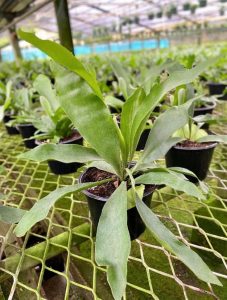
Staghorn Fern
A na-adọta ndị mmadụ na Tarn maka ụdị pụrụ iche ha pụrụ iche. Ihe ntụgharị, nke mmanye na ngalaba na-apụ apụ n'ụzọ na-enweghị oke mgbochi, nye ihe na-akpụ akpụ nke dị mma ma nwee obi ike. Nke a na-eme ka ha bụrụ mkparịta ụka na-akparịta ụka n'ime ụlọ ọ bụla, ihe ọkụkụ nke dị oke mma dị ka ọ bụ akụkụ dị ndụ.
Njiri mara mma
The Staghorn Fern’s decorative prowess lies in its ability to blend seamlessly into a variety of aesthetic themes, from tropical and jungle-inspired settings to minimalist and modern decor. Their large, architectural leaves can serve as a focal point, anchoring the look of a room and adding a layer of depth and texture that is hard to replicate with artificial decor.
Verbatality na imewe
Ferns ndị a dị iche iche na ebe ha na-etinye, ma ha awụnyere ha n'elu ga-egosi usoro uto ha na-eto ma ọ bụ ite a na-ekwu okwu iji mepụta nsonaazụ cancading. Ọnụnọ ha nwere ike ịgbanwe mgbidi dị larịị ma ọ bụ tinye mmetụ akwụkwọ ndụ akwụkwọ ndụ na shelf ma ọ bụ oche.
Ike na amara
Eleghị anya nke stathorn ferns na-enweghị mgbagha. Ha nwere amara na-eme ka ndị na-emekọrịta ndị ọgbara ọhụrụ na-eme ka ndị ọzọ nọ n'oge a, na-enye mmetụta na-eme ka ha nwee obi ike. Ihe okike ha na-eme ka ha na-eme ihe dị iche iche na ihe, na-eme ka ha bụrụ onye na-eme atụmatụ na ndị nwe ụlọ na-achọ inye ohere ha na ndụ na agwa ha.
In essence, the Staghorn Fern is more than just a plant—it’s a statement of taste and a testament to the beauty of nature’s diversity. Its unique form and decorative appeal make it a beloved addition to homes and offices, offering a living piece of art that enhances any environment with its presence.





